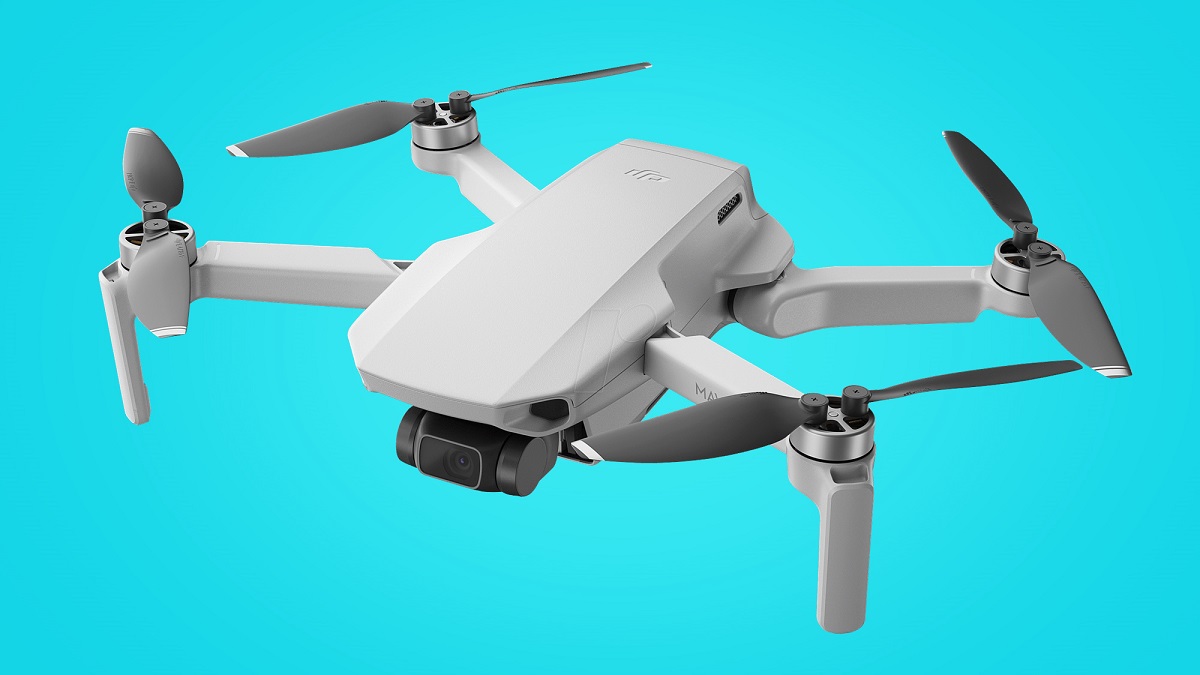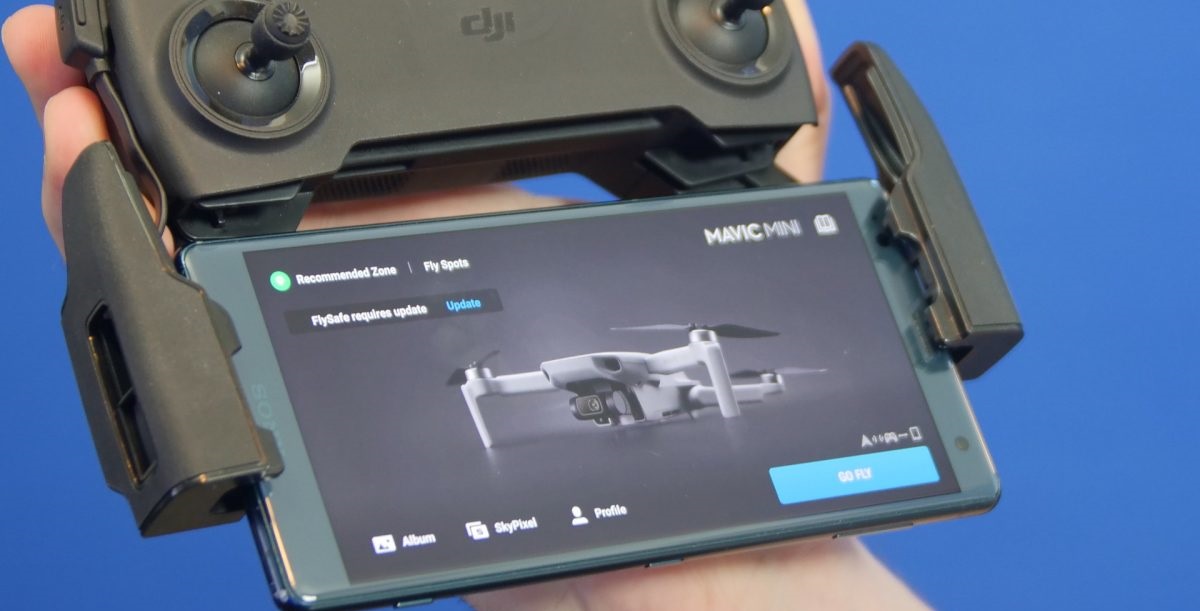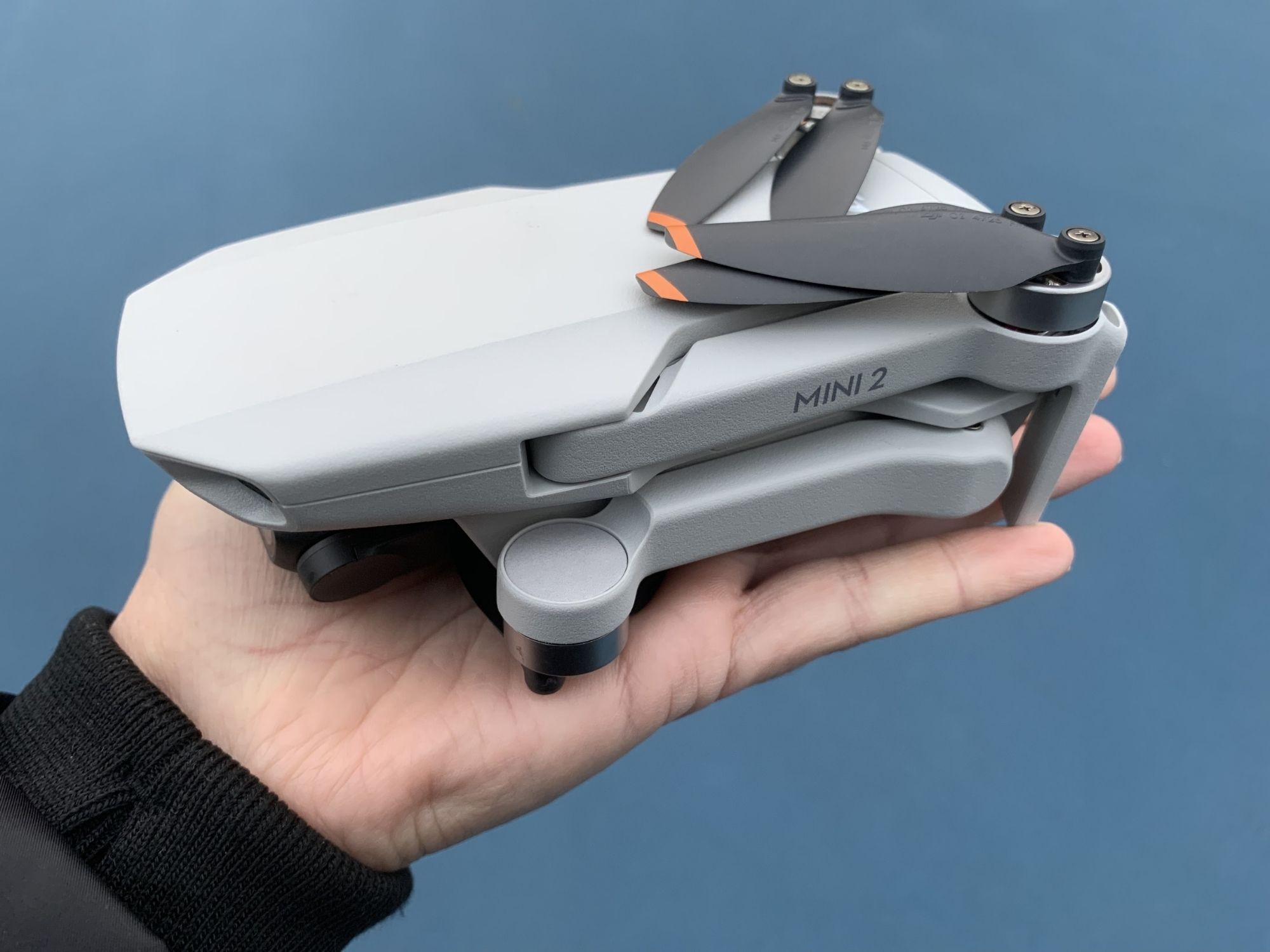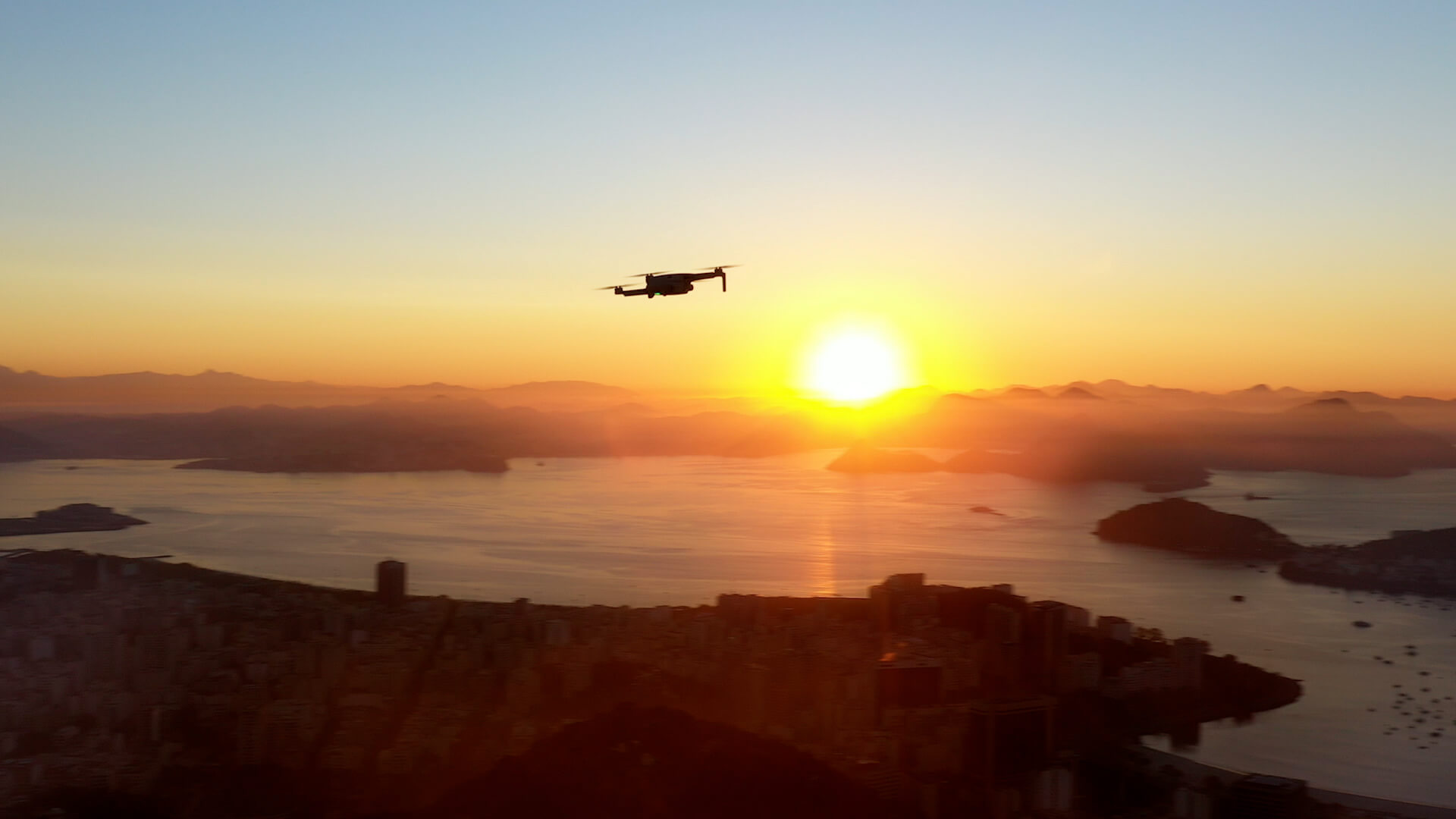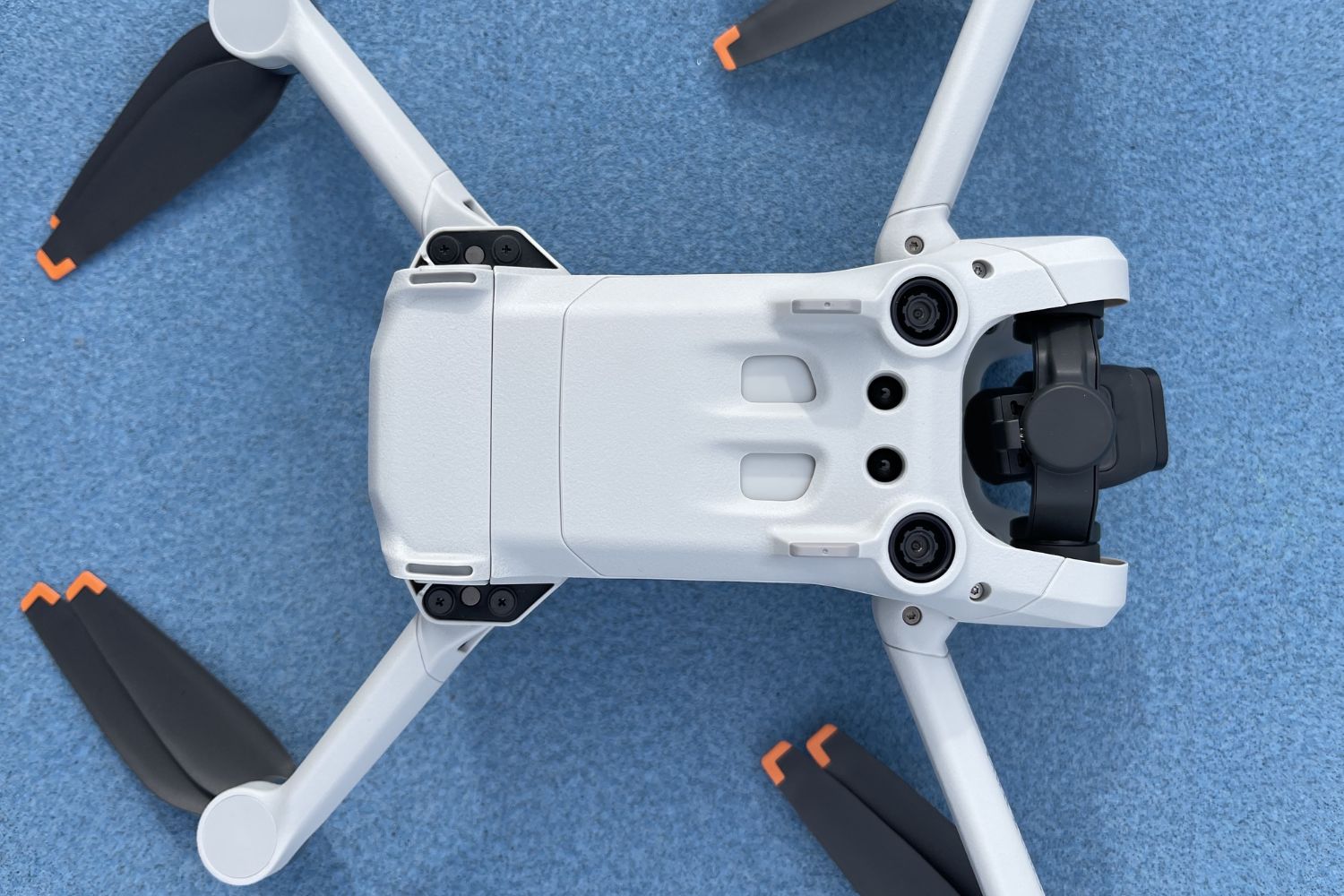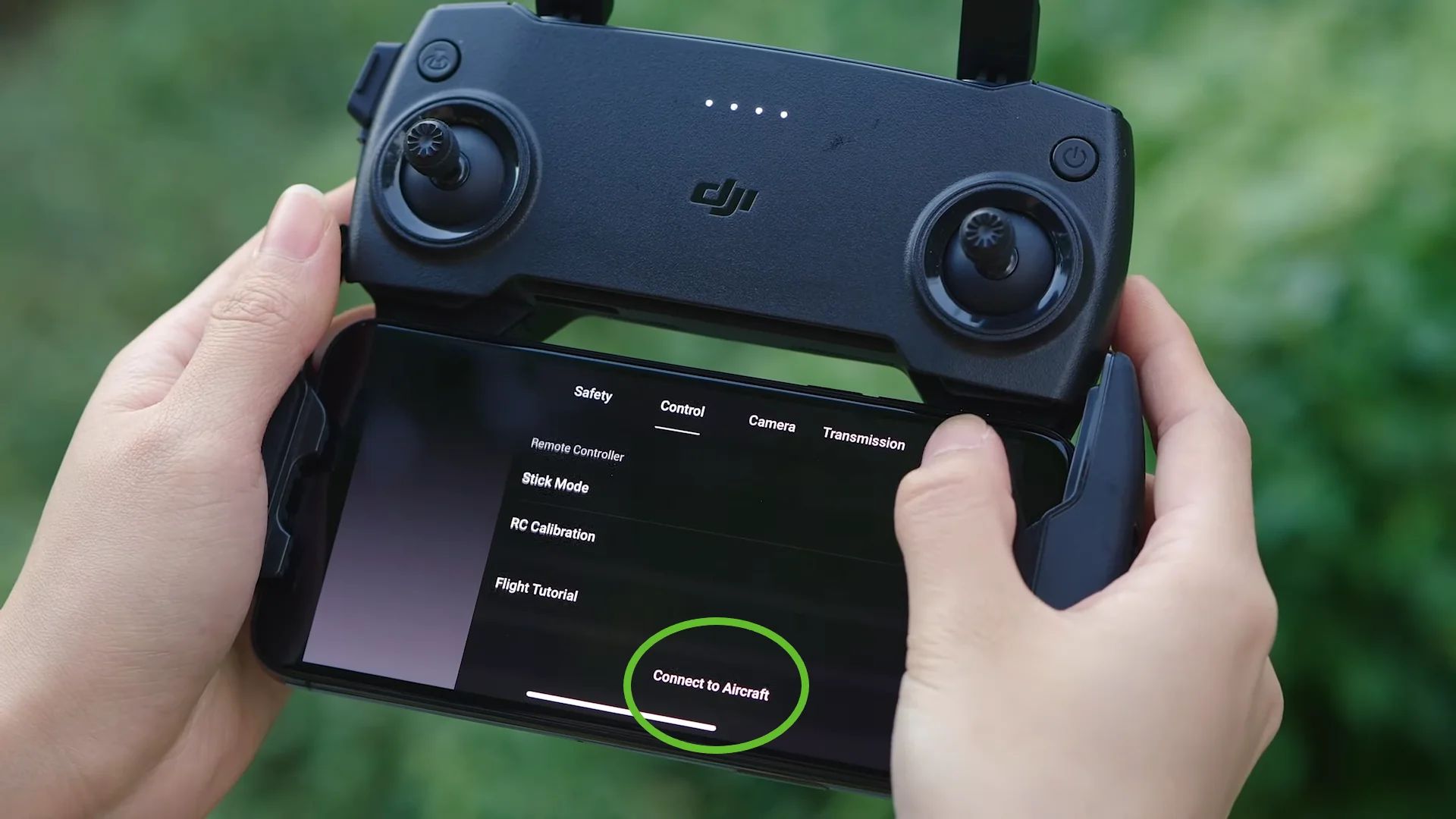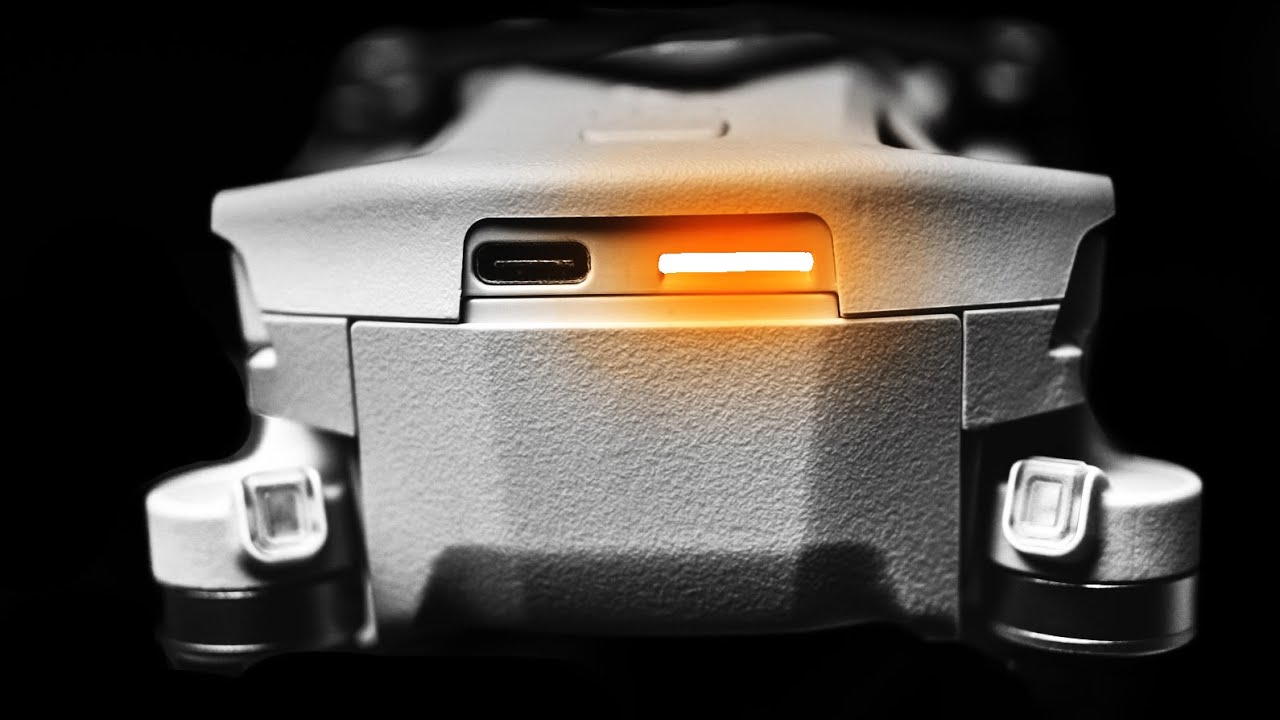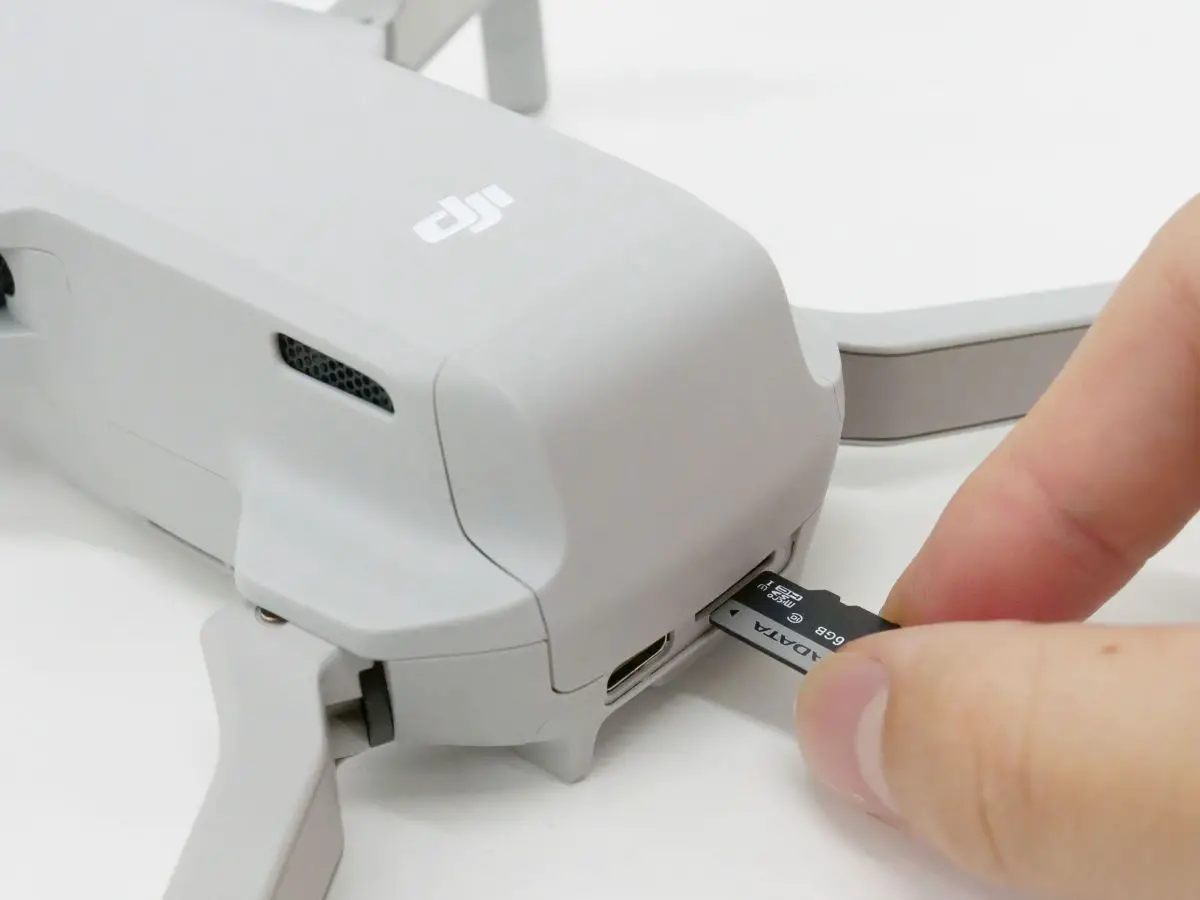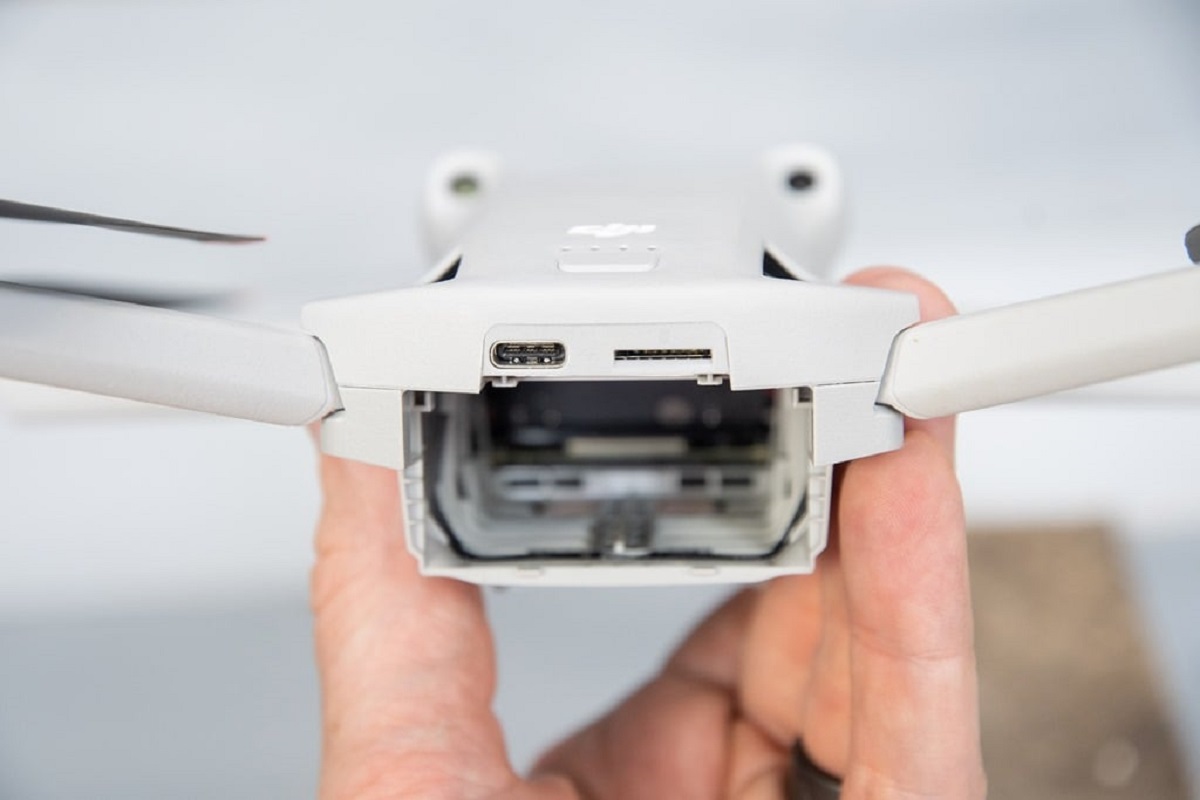Introduction
Welcome to the world of DJI drones, where capturing stunning aerial shots and breathtaking videos is made possible. As a drone pilot, you understand the importance of quality footage and the need for efficient storage solutions. That’s where the humble SD card comes into play.
While SD cards may seem like an afterthought, they play a vital role in ensuring seamless recording and storage of your drone’s data. However, using an SD card without proper formatting can lead to compatibility issues or data corruption, potentially ruining your flights and precious footage.
In this article, we will guide you through the process of formatting an SD card for your DJI drone. We will cover why formatting is essential, how to check the compatibility of your SD card with your drone, and the steps to format it using both your DJI Go app and your computer.
Whether you’re a seasoned drone pilot or just getting started, understanding how to properly format an SD card is crucial to ensure optimal performance and data integrity. So, let’s dive in and explore the world of SD card formatting for your DJI drone!
Why Format an SD Card for Your DJI Drone?
Formatting your SD card for your DJI drone is an important step that should not be overlooked. Here are several key reasons why formatting is essential:
1. Compatibility: DJI drones are designed to work seamlessly with specific SD card formats. By formatting your SD card according to the recommended specifications, you ensure optimal compatibility between your drone and the storage device. This helps prevent potential errors and malfunctions during your flights.
2. Data Integrity: Formatting your SD card erases any existing data and creates a clean file structure. This helps maintain the integrity of your data by minimizing the chances of fragmentation and file corruption. Additionally, formatting removes any hidden files or unnecessary system files that may occupy space on the SD card.
3. Performance Optimization: Over time, stray files and remnants from previous flights can slow down the performance of your SD card. By formatting it regularly, you free up space and ensure that your drone can write and read data at optimal speeds. This is particularly crucial when shooting high-definition videos or capturing photos in burst mode.
4. Error Prevention: An improperly formatted SD card can potentially cause errors and malfunctions during your drone flights. Formatting eliminates the risk of encountering issues such as data loss, freezing, or system crashes. Starting with a fresh, properly formatted SD card provides a stable foundation for your drone’s storage needs.
5. Efficient Organization: Formatting your SD card allows you to start with a clean slate, enabling efficient organization of your files. You can create specific folders or directories to separate photos, videos, and other data, making it easier to locate and manage your files in the future.
By understanding the importance of formatting an SD card for your DJI drone, you can ensure a smoother and more reliable flight experience. Now, let’s move on to the next section to learn how to check the compatibility of your SD card with your drone.
Checking Compatibility of the SD Card with Your DJI Drone
Before you format your SD card, it is crucial to ensure that it is compatible with your DJI drone. DJI drones have specific requirements for the type and capacity of SD cards they can support. Here are the steps to check the compatibility of your SD card:
1. Review the DJI Drone Manual: The first step is to consult the user manual of your DJI drone. It will provide detailed information about the compatible SD card types and capacities. Look for the recommended brands, models, and maximum storage capacity that your drone supports.
2. Visit the DJI Website: The DJI website is another valuable resource for checking SD card compatibility. DJI often publishes lists of recommended SD cards for each specific drone model on their website. Go to the support section of the DJI website and search for your drone model. Look for the “SD Card Compatibility” or “Recommended SD Cards” section to find the official recommendations.
3. Consider Speed Class and Capacity: Make sure to select an SD card with a sufficient speed class and storage capacity. For most DJI drones, a minimum Class 10 or UHS Speed Class 3 (U3) SD card is recommended to support the high data transfer rates required for smooth video recording. Additionally, consider the storage capacity needed based on the length and quality of videos or photos you plan to capture.
4. Pay Attention to Firmware Updates: Keep in mind that firmware updates released by DJI might introduce support for newer and larger capacity SD cards. Check for any firmware updates for your drone, as they may expand the list of supported SD cards or increase the maximum storage capacity your drone can handle.
5. Test Compatibility: If you have an SD card that meets the recommended specifications but is not on the official compatibility list, you can still give it a try. Insert the SD card into your drone and run a test flight or record a short video to ensure stability and data recording without any issues. However, always remember that official compatibility recommendations provide the highest level of assurance.
By following these steps, you can ensure that the SD card you use is compatible with your DJI drone. Next, let’s discuss the importance of backing up the content of your SD card before formatting.
Backing up the Content of Your SD Card Before Formatting
Before you proceed with formatting your SD card for your DJI drone, it is crucial to back up the content stored on it. This ensures that you don’t lose any valuable footage or data during the formatting process. Here are the steps to back up the content of your SD card:
1. Connect Your SD Card: Insert the SD card into your computer’s SD card reader or use a USB adapter to connect it. Ensure that your computer recognizes the SD card and it appears as a removable storage device.
2. Copy the Files: Once your SD card is connected, navigate to it using your computer’s file explorer. Copy and paste the entire contents of the SD card onto your computer’s hard drive or an external storage device. Depending on the size and number of files, this process may take some time.
3. Verify the Backup: After the file transfer is complete, double-check the backup to ensure that all the files are successfully copied. Open a few files randomly to confirm that they are intact and accessible.
4. Store the Backup Safely: Once you have verified the backup, it is essential to store it in a safe and secure location. Consider using an external hard drive, cloud storage, or another reliable storage solution to keep the backup separate from the original SD card.
5. Formatting the SD Card: After you have backed up all the necessary files, you can proceed to format your SD card. Formatting will erase all data on the card, so ensuring a proper backup is a crucial step to avoid any data loss.
By following these steps, you can securely back up the content of your SD card before formatting it for your DJI drone. This ensures that your valuable footage and data are safely stored and ready to be transferred back to the SD card after formatting. Next, let’s explore the process of formatting an SD card using the DJI Go app.
Formatting an SD Card Using DJI Go App
The DJI Go app provides a convenient and straightforward method to format your SD card directly from your mobile device. Here are the steps to format an SD card using the DJI Go app:
1. Connect Your Drone and Launch DJI Go: Turn on your DJI drone and connect it to your mobile device. Launch the DJI Go app on your device and ensure that it establishes a stable connection with the drone.
2. Go to the Camera Settings: Once connected, navigate to the camera view in the DJI Go app. You can usually find this by tapping on the camera icon or accessing the camera settings through the menu.
3. Access the SD Card Settings: Within the camera settings, look for an option related to the SD card. It may be labeled as “Storage,” “SD Card,” or something similar. Tap on it to access the SD card settings.
4. Format the SD Card: In the SD card settings, you will find an option to format the SD card. Tap on it to initiate the formatting process. A confirmation prompt may appear, asking you to confirm the action. Read the prompt carefully and confirm your decision to proceed with the formatting.
5. Wait for the Formatting to Complete: Once confirmed, the DJI Go app will begin formatting your SD card. Depending on the size and speed of your SD card, this process may take a few minutes. It is important to remain patient and not interrupt the formatting while it is in progress.
6. Formatting Complete: Once the formatting process is complete, you will receive a notification or see a confirmation message within the DJI Go app. The SD card is now formatted and ready to be used with your DJI drone.
It is important to note that formatting an SD card using the DJI Go app erases all data on the card. Therefore, it is crucial to ensure you have backed up the necessary files before proceeding with the formatting process. Now that you know how to format an SD card using the DJI Go app, let’s explore an alternative method using a computer.
Formatting an SD Card Using a Computer
If you prefer to format your SD card using a computer, there are simple steps you can follow. Here’s how to format an SD card using your computer:
1. Connect Your SD Card: Insert the SD card into your computer’s SD card reader or use a USB adapter to connect it. Ensure that your computer recognizes the SD card and it appears as a removable storage device.
2. Open File Explorer: Open the File Explorer (Windows) or Finder (Mac) on your computer. Navigate to “This PC” (Windows) or “Devices” (Mac) to locate the SD card, which usually appears as a separate drive.
3. Select the SD Card: Once you have located the SD card, right-click on it and select the “Format” option from the context menu. This will open the formatting dialog box.
4. Choose File System and Allocation Unit Size: In the formatting dialog box, you can choose the file system and allocation unit size for your SD card. For compatibility, it is recommended to select “FAT32” as the file system for SD cards up to 32GB in size. For larger SD cards, select “exFAT.” Leave the allocation unit size as the default option unless you have specific requirements.
5. Start the Formatting Process: Once you have selected the file system and allocation unit size, click on the “Start” or “Format” button to begin the formatting process. A warning message may appear, notifying you that formatting will erase all data on the SD card. Confirm your decision to proceed.
6. Wait for Formatting to Complete: The formatting process may take a few seconds or minutes, depending on the size and speed of your SD card. Avoid removing the SD card or interrupting the process while it is in progress.
7. Formatting Complete: Once the formatting process is complete, you will receive a notification or see a confirmation message on your computer screen. Your SD card is now formatted and ready to be used with your DJI drone.
Remember, formatting an SD card using a computer will erase all data on the card. Therefore, it is crucial to ensure you have backed up any necessary files before proceeding. Now that you know how to format an SD card using a computer, let’s move on to some tips for maintaining an SD card’s performance.
Tips for Maintaining an SD Card’s Performance
To ensure optimal performance and longevity of your SD card, it’s important to follow a few simple maintenance practices. Here are some tips to help you maintain your SD card’s performance:
1. Keep Your SD Card Clean: Regularly clean your SD card to remove dust, dirt, or fingerprints that can potentially interfere with its performance. Use a soft, lint-free cloth or an SD card cleaning tool to gently wipe the contacts and surfaces of the card.
2. Avoid Overwriting Files: Over time, repeatedly overwriting files on an SD card can lead to data fragmentation and decrease its performance. Instead, try to transfer your files to a computer or an external storage device and format the SD card to start fresh periodically.
3. Safely Eject the SD Card: Always ensure that you safely eject the SD card from your device before removing it physically. This prevents data corruption and ensures that all pending write operations are properly completed.
4. Keep the SD Card Protected: Protect your SD card from exposure to extreme temperatures, moisture, and magnetic fields. Store it in a protective case or sleeve to prevent physical damage when not in use.
5. Update Firmware and Drivers: Regularly check for firmware updates for your DJI drone and driver updates for your computer’s SD card reader. Updated firmware and drivers can improve compatibility and overall performance.
6. Avoid Full Storage: Try to avoid filling your SD card to its maximum capacity. Leaving some free space allows the card to operate more efficiently and reduces the risk of data corruption.
7. Use Reliable Brands: It is recommended to use reliable and reputable brands for your SD cards. Quality SD cards from trusted manufacturers undergo rigorous testing and are more likely to provide better performance and longevity.
8. Format In-Camera: Whenever possible, format your SD card using the formatting function within your DJI drone’s camera settings. This ensures compatibility and helps optimize the card for optimal performance with your specific drone model.
By following these tips, you can maximize the performance and lifespan of your SD card, ensuring smooth operations and reliable data storage for your DJI drone. Now that you have learned essential maintenance practices, let’s wrap up this article.
Conclusion
Formatting an SD card for your DJI drone is a crucial step in ensuring compatibility, data integrity, and optimal performance. By following the steps outlined in this article, you can confidently format your SD card using either the DJI Go app or your computer.
We discussed the importance of formatting an SD card, including the benefits of compatibility, data integrity, performance optimization, error prevention, and efficient organization. Checking the compatibility of your SD card with your DJI drone is vital to ensure seamless functionality and reliable data recording.
Before formatting, it is essential to back up the content of your SD card to prevent any data loss. Whether using the DJI Go app or a computer, the formatting process is straightforward and should be done periodically to maintain optimal performance.
Additionally, we provided some valuable tips for maintaining an SD card’s performance. By keeping your SD card clean, avoiding overwriting files, safely ejecting the card, protecting it from damage, updating firmware and drivers, managing storage space, using reliable brands, and formatting in-camera when possible, you can extend the lifespan and efficiency of your SD card.
Remember to always refer to your DJI drone’s manual and official compatibility resources to ensure that you select the appropriate SD card for your specific model. Following the manufacturer’s recommendations is key to maximize compatibility and performance.
By taking the necessary steps to format and maintain your SD card, you can enjoy a smooth and reliable flight experience with your DJI drone, capturing stunning footage and preserving precious memories. So, grab your SD card and get ready to soar to new heights with confidence!







